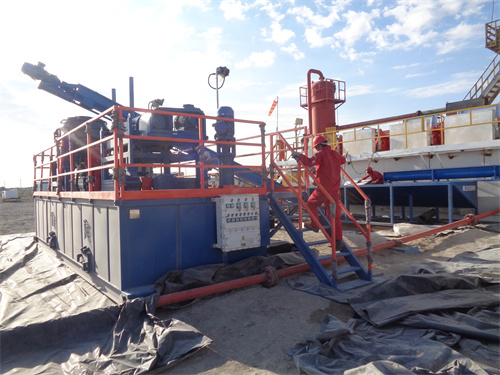- Home
- Products
-
-
Solids Control Equipment
- Linear Motion Shale Shaker
- Decanter Centrifuge
- Mud Cleaner
- Vacuum Degasser
- Centrifugal Pump
- Shear Pump
- Submersible Slurry Pump
- Mud Agitator
- Mud Gun
- Jet Mud Mixer
- Desilter
- Water Tank
- LS606 Shale Shaker
- Mud Tank
- LS1850 Shale Shaker
- Diesel Tank
- Dome-shaped mud cleaner
- Vertical cyclone desilter
- KQG30 Automatic Tank Cleaning
- MD210 Drilling Mud Cleaner
-
Solids Control System
- Solids Control System
- Mobile Solids Control System
- Arctic Solids Control System
- Drilling Mud Cooling System
- Liquid Mud Plant (LMP )
-
TBM
- Tunnel Boring Mud System
-
HDD
- HDD Mud Recovery System
-
-
- News
- Services
- Marketing
- About Us
- Contact Us
- Videos
Home > KOSUN News >
The treatment of water-based mud generally adopts two treatment methods
Nov 12, 2024
During the drilling process of oil and gas field exploitation, waste drilling mud will be generated. According to the different types of mud, it can be divided into water-based drilling mud and oil-based drilling mud. The waste water-based drilling mud has been tested for toxicity and is general waste and non-hazardous waste. Generally speaking, the waste mud of water-based drilling is gray-green and gray, and the first and second mud has a high sand content and a large specific gravity. The cementing mud and deep well mud are paste-like, with less sand content, but higher viscosity.

Whether it is first and second opening mud, or cementing mud and deep well mud, etc., they are all muds that do not have the function of use in the whole drilling fluid system, which are rich in a variety of organic and inorganic chemical treatment agents, Some component pollution indicators even exceed the national allowable emission concentration many times. Generally speaking, the main pollutants contained in water-based drilling waste mud are: suspended solids, petroleum hydrocarbons, organic matter, overly alkaline substances, heavy metals and other chemical additives.
At present, with the country's green waters and green mountains and the continuous strict environmental protection measures, the oilfield industry will face increasing pressure on environmental protection. As the main pollutants in the drilling process of oil wells, the waste drilling mud and its cuttings, as the general industrial solid waste under the national key control, should follow the relevant requirements and laws and regulations, so as to obtain resources from the environment and at the same time pay attention to the environmental protection. Restoration and conservation, landfilling, and other incremental treatment methods are generally not accepted or even prohibited by oil fields.
Oilfield drilling generally adopts two treatment methods for the treatment of water-based mud, the on-site mud zero discharge technology while drilling and the centralized treatment of water-based mud. Water-based mud zero discharge equipment while drilling mainly includes: water-based mud conveying equipment, screening equipment, filter press equipment or centrifugal equipment and dosing devices. After screening, dosing, filter press and dehydration, the mud cake is sent to landfill or brick factory for disposal.


